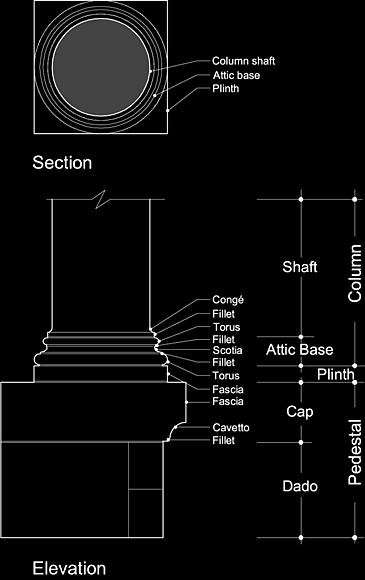

A Pedestal is a low articulated pier with three sections: a base, a dado (also called a die), and a cap.
A Plinth is a low rectangular block often used to support the base of a column.
A Column is the supporting, vertical element, or post, of an architectural order, consisting of a base, a shaft, and a capital. In Greek examples of some orders, the base was often omitted.
The Base is the lowest portion or foot of a column. This column has an Attic base, the most common form of column base, which has a lower torus, a fillet, a scotia, a fillet, and an upper torus. The name 'scotia'comes from the Greek word for shadow.
The Shaft is the principal, drum-shaped portion of a column or the flat pier
portion of a pilaster. The shaft usually diminishes in diameter from bottom
to top with a gentle convex curve, beginning approximately one-third of the
way up from the base and continuing to the top, called entasis. The shaft
begins at the bottom with a fillet and a congé (also called an apophyge) and
ends at the top with a congé and a fillet.
Learn about Classical Molding Profiles